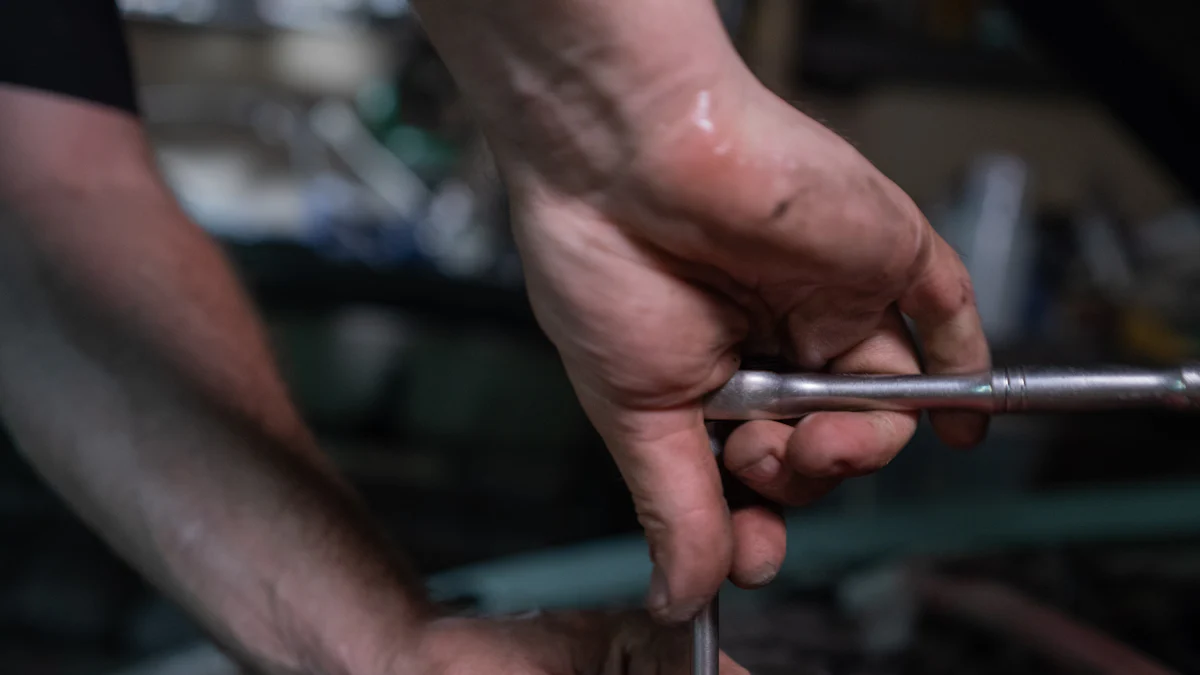
Regular oil changes are crucial for ensuring the life of your car or truck. This not only prohibits the engine from seizing up, but also ensures smooth running and good gas mileage. An oil drain plug spanner plays a key role in this process. This tool helps you remove and tighten the oil drain plug with ease. This guide aims to help beginners understand how to use an oil drain plug spanner effectively.
Preparation Steps

Gather Necessary Tools and Materials
List of tools (oil drain plug spanner, oil pan, gloves, etc.)
Begin by gathering all necessary tools and materials. You will need an oil drain plug spanner, an oil pan, and a pair of gloves. Also, have some rags or paper towels on hand for cleaning up any spills.
Safety precautions (wear gloves, ensure the car is on a flat surface, etc.)
Safety is crucial when working on your vehicle. Wear gloves to protect your hands from hot oil and sharp edges. Ensure the car is on a flat surface to prevent any accidents. Use wheel chocks to keep the car from rolling.
Position the Vehicle
Use of car ramps or jack stands
Position the vehicle using car ramps or jack stands. Drive the front wheels onto the ramps if you use ramps. If you use jack stands, lift the car with a jack and place the stands under the car’s frame. Make sure the car is high enough to access the oil drain plug comfortably.
Ensuring the vehicle is secure
Ensure the vehicle is secure before crawling underneath. Double-check that the car ramps or jack stands are stable. Give the car a gentle push to confirm it will not move.
Locate the Oil Drain Plug
Refer to the vehicle’s manual
Refer to the vehicle’s manual to locate the oil drain plug. The manual provides specific information about the location and type of drain plug used in your car.
Common locations of the oil drain plug
Common locations for the oil drain plug include the bottom of the oil pan. Look for a bolt or plug at the lowest point of the oil pan. Some vehicles may have a plastic cover that needs removal to access the drain plug.
Using the Oil Drain Plug Spanner

Loosening the Oil Drain Plug
Proper positioning of the oil drain plug spanner
Position the oil drain plug spanner correctly. Align the spanner with the oil drain plug. Ensure a snug fit to avoid stripping the plug.
Turning direction (counterclockwise)
Turn the oil drain plug spanner counterclockwise. Use the rule “lefty loosey” to remember the direction. Apply steady pressure until the plug starts to loosen.
Draining the Oil
Placing the oil pan correctly
Place the oil pan directly under the oil drain plug. Ensure the pan can catch all the draining oil. Positioning the pan correctly prevents spills and messes.
Allowing sufficient time for oil to drain
Allow the oil to drain completely. This process may take several minutes. Be patient and ensure all old oil exits the engine.
Tightening the Oil Drain Plug
Cleaning the drain plug and surrounding area
Clean the oil drain plug and the surrounding area. Use rags or paper towels for this task. Removing dirt and debris ensures a proper seal.
Proper positioning of the oil drain plug spanner
Position the oil drain plug spanner correctly on the plug. Align the spanner to ensure a tight fit. This step is crucial for proper tightening.
Turning direction (clockwise)
Turn the oil drain plug spanner clockwise. Use the rule “righty tighty” to remember the direction. Tighten the plug securely but avoid over-tightening. Over-tightening can damage the plug or the oil pan.
Cleanup and Verification
Disposing of Used Oil
Proper disposal methods
Collect the used oil in a sealed container. Take the container to a recycling center or an auto parts store that accepts used oil. Many locations offer free disposal services.
Environmental considerations
Used oil can harm the environment. Never pour used oil down the drain or onto the ground. Recycling used oil helps protect water supplies and wildlife.
Checking for Leaks
Inspecting the drain plug area
Inspect the drain plug area after tightening the plug. Look for any signs of oil leakage. Wipe away any excess oil to get a clear view.
Running the engine briefly
Start the engine and let it run for a few minutes. Turn off the engine and check the drain plug area again. Ensure no oil is leaking from the plug.
Final Steps
Lowering the vehicle
Lower the vehicle carefully if you used a jack and jack stands. Remove the jack stands and slowly lower the car to the ground. If you used ramps, drive the car off the ramps with caution.
Recording the oil change date and mileage
Record the date and mileage of the oil change. Keep a logbook or use a mobile app to track maintenance. Regular records help maintain the vehicle’s health.
Using the oil drain plug spanner correctly ensures a smooth and efficient oil change. Regular oil changes keep the engine running smoothly and improve gas mileage. Proper maintenance prevents costly repairs and extends the vehicle’s lifespan.
Frequent oil changes reduce engine noise and emissions. Clean oil keeps the engine cool and lubricated, avoiding expensive part replacements.
Feel free to leave comments or ask questions below. Your feedback helps improve the content and assists other readers.
See Also
Scooter Upgrades: High-Quality Parts for Maximum Performance
Discovering Diverse Sock Options for Both Genders
Mastering Winter Comfort with Soft and Cozy Towel Socks
